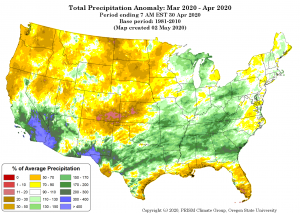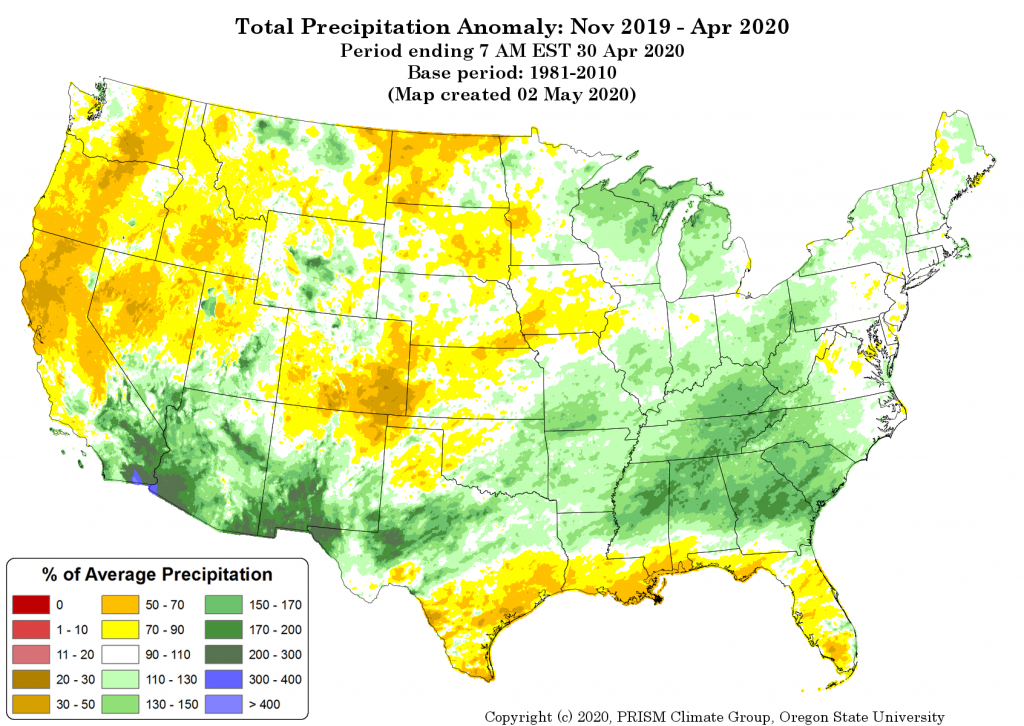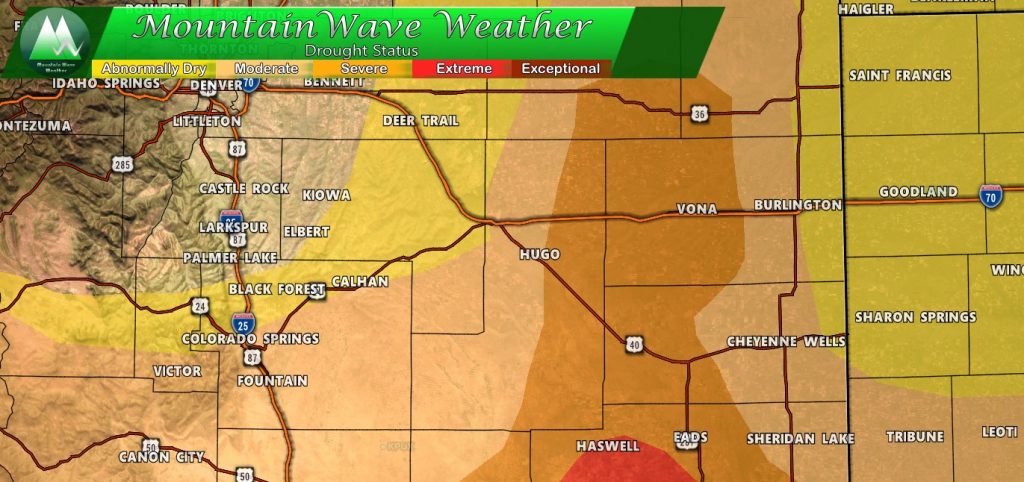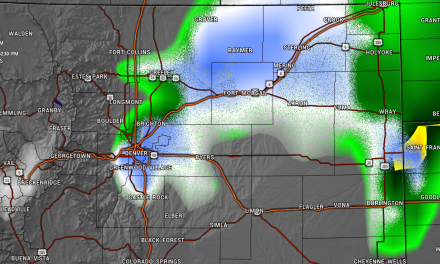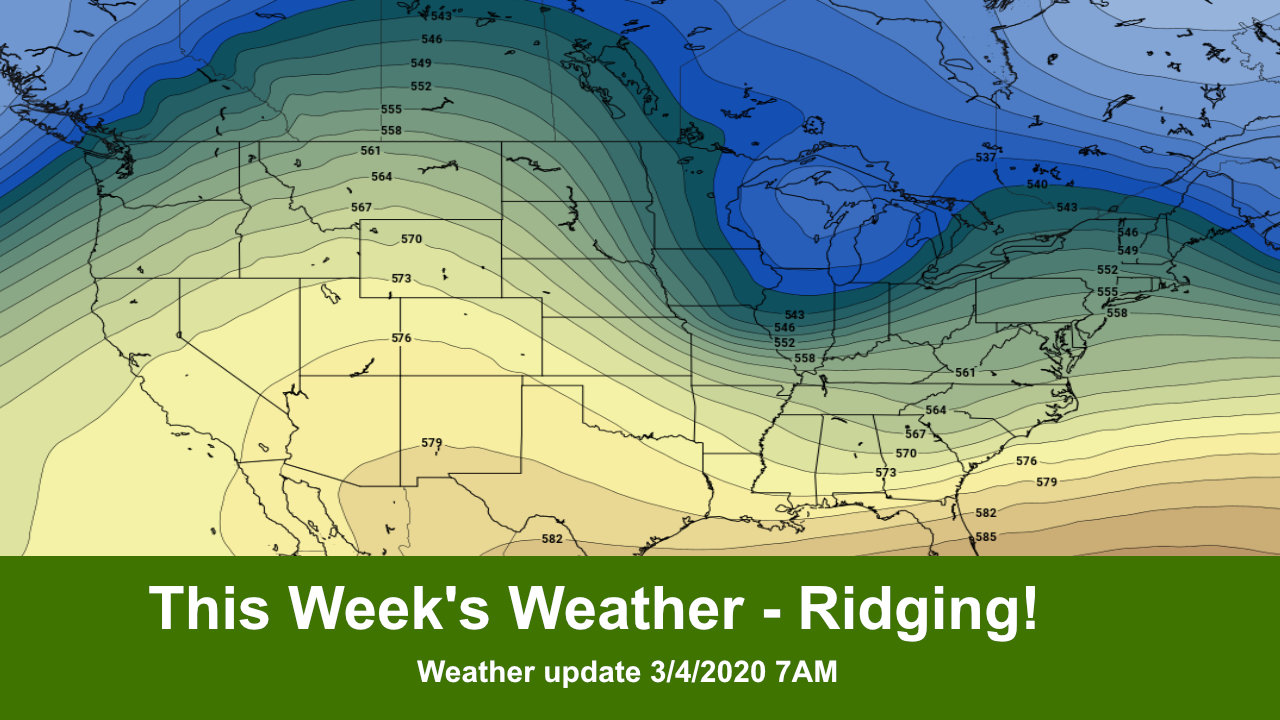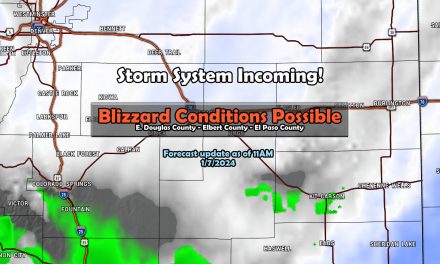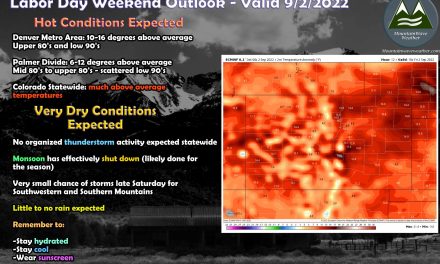What Makes a Drought
Drought is not a short term thing. A lot of folks get confused about what it actually means and indeed one of the biggest questions I’ve been asked in the past few weeks is, “if we had so much snow this winter, how can we be seeing drought conditions?” With weather you often have to view things over a period of time rather than one point… for example this year we saw a few large snow storms that gave us ample moisture along the Palmer Divide, but when you look at the conditions around those storms it was dry. There were more dry periods than wet periods over the past 6 months and that all adds up to dry conditions overall.
Additionally, the snowpack in the mountains settled right in around 100% which means it was “average.” Average is always good but you have to remember that with average snowpack and little moisture in the spring – conditions can quickly turn dry with warmer temperatures and increased runoff.
Given snowpack was average, that puts in perspective this next graphic I will show. It is a look at precipitation as a % of normal for March and April 2020
You can click on the image to zoom in, but it hits the point home; March and April were pretty close to bone dry for a lot of Central, Eastern and Southern Colorado. Spring is one of our wettest times of year and when we see data like this it begins to make us a bit nervous as to what our summer will look like. A dry spring is often a harbinger of a hot and dry summer.
Wait… Didn’t We Have A Wet Winter?
As is often the case with this type of question; the main thing to look at here is when and where. We can look at the PRISM data for average % of precipitation for the past 6 months and note that much of Eastern and Southern Colorado has been unusually dry. This is important to understand because while we had 1 or 2 months of above average precipitation here and there in the winter and spring… the overall trend has been drier than normal. Remember as I mentioned above, droughts are made or broken over longer periods of time. A longer dry period with only one or two short blips of moisture will not make a dent in a drought.
Current Drought Monitor
As you can see, drought conditions are beginning to fill back in along the Palmer Divide and especially South central and Southeastern Colorado. If you’ll recall, they did not receive nearly as much beneficial moisture as areas to the North did… and with meager moisture so far in spring time, a lot of those areas are experiencing pretty significant drought conditions.
Along the Palmer Divide; the Western sections in Douglas and Western Elbert County have been drier than normal, but are holding for now due to decent snowfall over the winter time. As you move into central and Eastern Elbert county Abnormally Dry (D0) conditions are establishing along with Moderate Drought (D1) conditions along the Southern parts of Elbert County.
Classifying Drought
What do the categories of drought actually mean? Here’s a handy chart that helps explain what each level of drought means and some of the effects:
| Category | Impact |
|---|---|
| D0
Abnormally Dry |
Hay production decreases; rangeland is dry |
| Irrigation begins sooner | |
| D1
Moderate Drought |
Rangeland growth is stunted; very little hay is available |
| Dryland crops suffer | |
| Wildfires increase | |
| Pheasant population declines; ski season is limited | |
| D2
Severe Drought |
CRP lands suffer |
| Farmers reduce planting; producers sell cattle | |
| Fire season is extended | |
| Snowpack is low; surface water levels are low; river flow is reduced | |
| D3
Extreme Drought |
Pasture conditions worsen |
| City landscapes are dying | |
| Large fires develop | |
| Rafting, fishing, hunting, skiing are reduced; fish kills occur | |
| Grasshopper and insect infestation are noted | |
| Reservoirs are extremely low; mandatory water restrictions are implemented; water temperature increases | |
| D4
Exceptional Drought |
Dust storms and topsoil removal are widespread |
| Agricultural and recreational economic losses are large |
What Happens Now?
Since drought continues to build on drier conditions and we don’t see a ton of moisture coming our way in the next week or two, we will have to keep an eye on things as we begin to transition into the warmer months towards summer. Even with dry conditions, drought status can maintain relatively well until temperatures begin to heat up, once they do it’s imperative that we see good, regular rain storms with decent precipitation.
The way things have gone this year, the month of May will make or break our summer. If may finishes dry we may be looking at significantly worsening drought conditions along the Palmer Divide and Southern Colorado in the near future.


